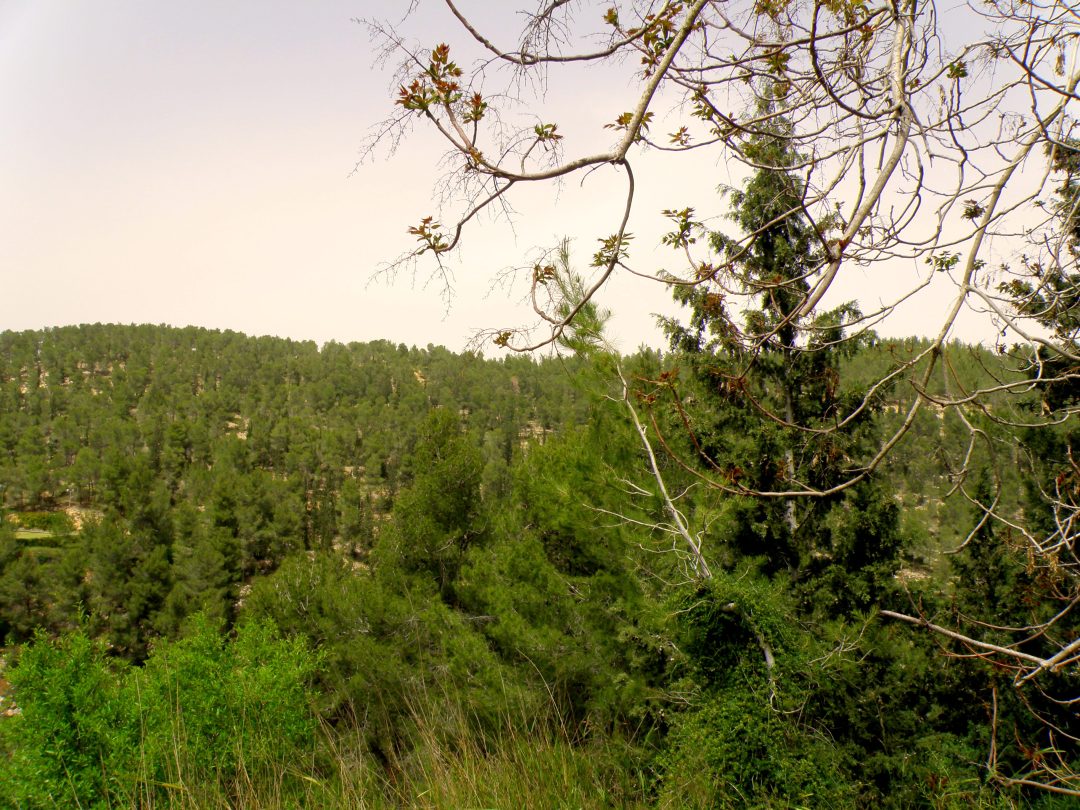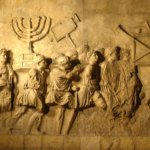Tu BShvat is a celebration of the New Year for Trees. In ancient times, ten percent of the fruit of the harvest was tithed to the priests or the poor, depending on the year.
Did you know that trees have their own New Year celebration? That’s right! It is called Tu B’Shvat, which is celebrated on the fifteenth of the Jewish month of Shvat. This year (2007) Tu B’Shvat falls on the Gregorian calendar date of Saturday, February 3 . The Tu B’ Shvat seder is performed the night before. The name Tu B’Shvat actually comes from the letters tet and viv which are equivalent to the number 15.
Trees are a vital part of our world. They provide sustenance, shade, and wood to burn and create our homes. In our modern world, we tend to take them very much for granted, but in ancient days they were honored and respected year-round as well as on Tu B’Shvat.
Honoring the Relationship between People of Israel and the Land of Israel
This celebration of trees honors the relationship between the people of Israel and the Land of Israel. This strong bond is symbolized by the deep roots of the tree. In effect, it is a celebration of the Earth itself.
 The celebration of Tu B’Shvat originated during the first century BCE. There were two Jewish Rabbis named Shammai and Hillel, who ultimately were made responsible for setting the date of the New Year for Trees. Since a time for this celebration was not given in the Scriptures, they had to come up with an appropriate time that would work for the entire Jewish community. But, how do you decide on the birthday of a tree? The two Rabbis chose the date that the trees stopped absorbing water from the ground, and drew their nourishment from their sap instead. The problem was that Shammai lived in the coastal plain and the Sharon valley where the flowers came into bloom at an earlier date than in the hills where Hillel lived. The soil was drier in the hills and the sap was weaker. Hillel won the argument and the date was set at the time he recommended.
The celebration of Tu B’Shvat originated during the first century BCE. There were two Jewish Rabbis named Shammai and Hillel, who ultimately were made responsible for setting the date of the New Year for Trees. Since a time for this celebration was not given in the Scriptures, they had to come up with an appropriate time that would work for the entire Jewish community. But, how do you decide on the birthday of a tree? The two Rabbis chose the date that the trees stopped absorbing water from the ground, and drew their nourishment from their sap instead. The problem was that Shammai lived in the coastal plain and the Sharon valley where the flowers came into bloom at an earlier date than in the hills where Hillel lived. The soil was drier in the hills and the sap was weaker. Hillel won the argument and the date was set at the time he recommended.
Why set a New Year for the trees in the first place?
Well, Jewish law determined that one-tenth of a person’s products must be given as a tax or a tithe, which went to the priesthood or the poor, depending upon the year. The system of taxing the fruit was very complex depending on what fruit blossomed when and how old the tree was at that time.
When the Jews were exiled from Israel they brought the celebration of Tu B’Shvat with them. Over the years, it became part of the celebration to eat the fruits of the Land on Tu B’Shvat, to plant trees, especially in the state of Israel, and to conduct a mystical seder concerning the inner dimensions of the fruits of Israel, complete with blessings, songs, and deep discussion
Foods During Tu B’Shvat
Special foods are eaten on Tu B’Shvat. Some people eat the fruits for which the Torah praises the Land of Israel. These foods include wheat, barley, grapes, figs, pomegranates, olives, and dates. Pears, citrons, oranges, apples, dates, nuts, melons, apricots, plums, and grapes – both fresh and dried – are also traditional fare on Tu B’Shvat.
It is also customary to eat fruit that has not been eaten during the year so that the Shehechiyanu blessing may be said. This blessing thanks God for providing life and health until this day.
The Kabbalah teaches that all the holidays are channels for specific spiritual Light to be revealed. On these special days, people on earth can connect to the unique Light that is present on that day, thereby bringing more Light into their lives.
The Kabbalah also teaches that every part of this world is filled with the Light of the Creator and that every part of the universe works in harmony to provide balance and spiritual growth to the world. Trees are an important aspect of both our physical and our spiritual world.
On Tu B’Shvet, new Light of the Creator showers down into the trees and vegetation of our world. This gives us all an opportunity to connect and receive this new powerful light and bring the peace and harmony it offers into our own lives.
Here is an awesome recipe for Tu B’shvat!
Tu B’shvat Fruited chicken
1 large onion
1 tbsp. oil
1 chicken, quartered
1/4 tsp. ginger
1/2 tsp. cinnamon
1/4 cup apricot jam
1 cup orange juice
juice of one lemon
2 cups chicken broth or water
1 cup prunes, pitted
1 cup dried apricots
1 cup roasted, unsalted almonds (1/2 cup chopped coarsely, 1/2 cup left whole)
salt and pepper to taste
Chop the onion. Saute in a large pot with oil until soft, but not browned.
While the onion is cooking, mix ginger and cinnamon and sprinkle on chicken pieces. When the onion is finished, place chicken in the pot, and brown on all sides. Add all other ingredients, reserving 1/2 cup whole almonds for garnish. Cook over low flame for at least 40 minutes, adding more broth if necessary. Add salt and pepper. Serve with rice and garnish with remaining almonds. Makes 4 servings.
And, check out telshemesh.org.. It is the first earth-based Jewish website I have seen to date!






